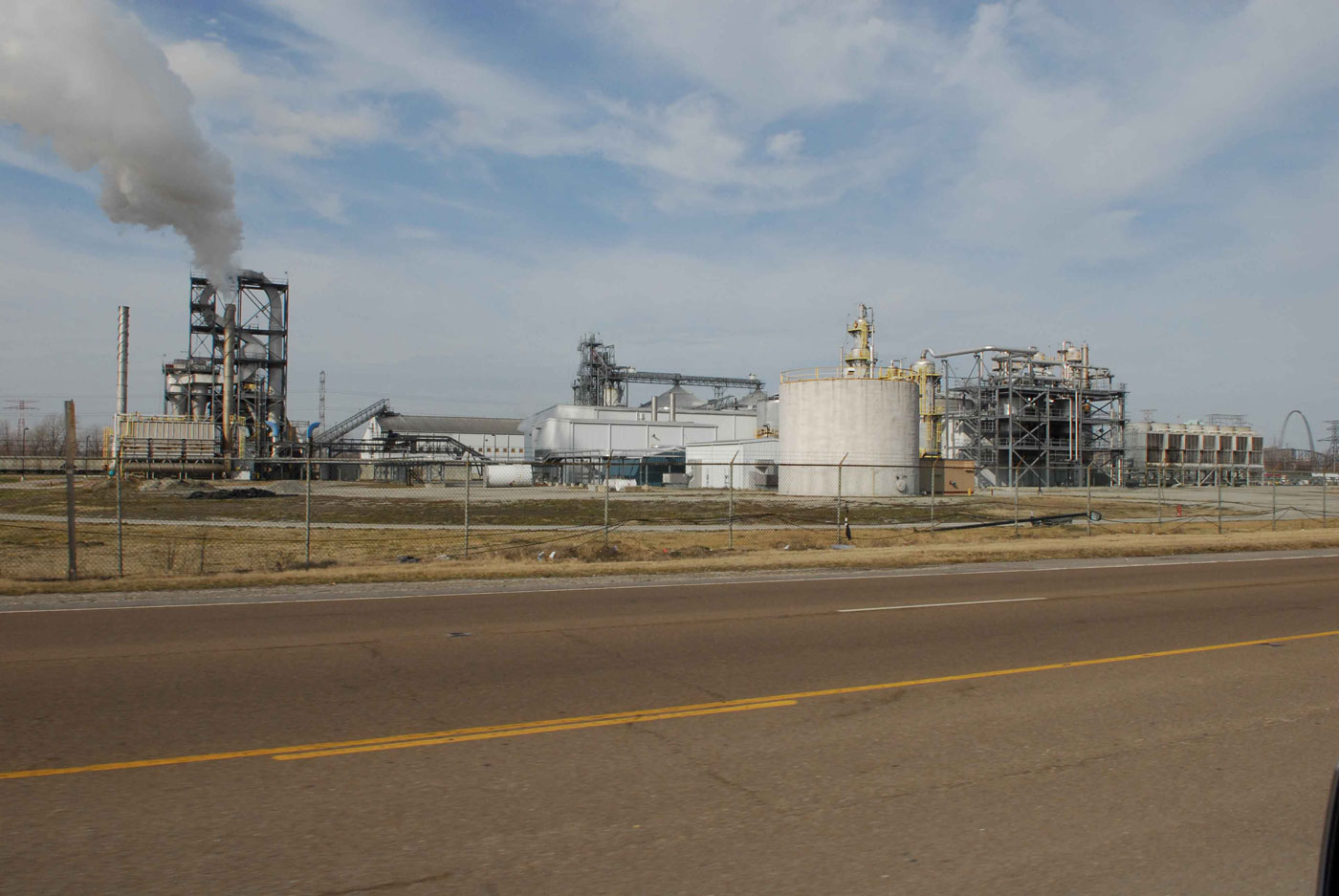

Few towns in the American Bottom epitomize the industrial imperatives of the region as thoroughly as the town of Sauget. Originally incorporated in 1926 as Monsanto Town, the town was founded explicitly as a "community of chemical-using industries" in an effort to establish a nearly regulation free zone for industry and business. Following the principles of the "Irwin System", the founders believed that a company would receive favorable publicity by having cities containing plant sites bear the company name. While many communities on the eastern side of the Mississippi welcomed the so-called 'smokestack' industries that civic-minded St Louis leaders would not tolerate, Monsanto took this to an extreme-finding even the regulations and restrictions in neighboring East St Louis to be too restrictive. As its name suggests, the Monsanto company had their primary chemical plants in the city, but with the production and use of Agent Orange during the Vietnam War, and its ties to this company, the city leaders decided to change the name to the less attention-grabbing name of Sauget-named after the first village President. While the town would today basically just be called an industrial park, the town nonetheless has the ignoble legacy as being the only North American PCB manufactory until 1977, and remains one of the most polluted areas in the entire country. Today, if you stand at the intersection of Route 3 and Monsanto Ave, you can see the extent of this town: Big River Zinc (NE corner: at one time the third largest zinc smelter in the country), Center Ethanol Plant (SW corner); former Monsanto plant (SE corner); Cerro Flow Products (manufacturer of blue urinal discs); the American Bottom Wastewater Treatment Plant (servicing nearly the entire Metro-East region); the Sauget Chemical Treatment Plant (one of only three such municipal plants in the country); and further west the six stacks of the Cahokia coal fired power plant; and the 5 or so adult entertainment clubs that have given the area the nickname of 'Sauget ballet'. Around the bend are a number of points of interest, including: the St Louis Building Arts Foundation-a material archive of architectural and industrial objects from cornices to entire iron storefronts to stained glass; the Cahokia 'superpower' plant-which was the largest power station at the time of its completion and whose 265 foot stacks are a familiar site from the opposite side of the river. Further out is the Downtown St. Louis Airport (a great spot for chartered flights around the city) and the new ballpark for the minor league Gateway Grizzlies.